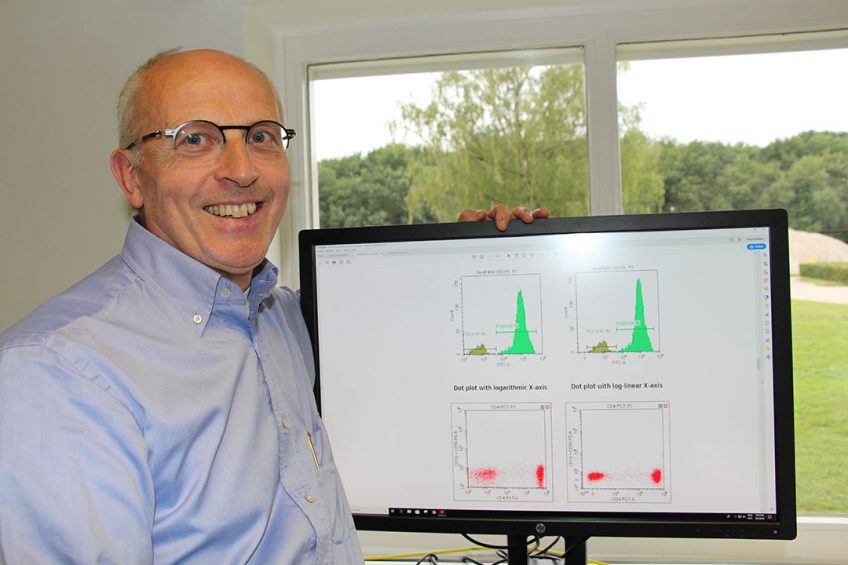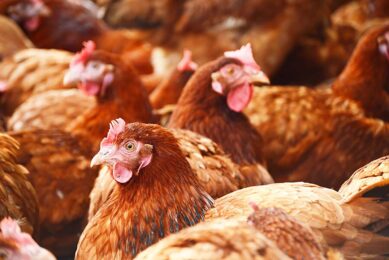Directing immune cells to specific organs

Activated immune cells can be sent through specific food components to a particular site in the body, like the upper respiratory tract or the skin. Poultry World looks at current research that builds on these findings and proves the hypothesis that immune cells can be directed to certain organs or body parts.
The research project ‘Nutrition-based gastro-intestinal health promotion in agricultural animal husbandry’ began in 2014 and is mentored by Huub Savelkoul, professor and head of the Cell Biology and Immunology group in the department of Animal Sciences at Wageningen University.
Profile
Huub Savelkoul is a professor and head of the Cell Biology and Immunology group in the department of Animal Sciences at Wageningen University. He is currently working on a research project focusing on ‘Nutrition-based gastro-intestinal health promotion in agricultural animal husbandry’.
Just last year Professor Savelkoul and his colleagues published their findings in the prestigious global scientific journal Mucosal Immunology. “Our study is based on extensive studies of food allergies in humans that evolved into a research programme called ‘Immune modulation through diet,’” Prof Savelkoul explained. “Immunomodulation by food and feed provides the industry with a new concept,” he continued. “So since then we have been actively communicating to the food industry and compound feed industry that there could be more to their feed than just nutrition. The relationship between gut, nutrition and resilience to infection and therefore general health is relevant to both humans and animals alike. Maintaining health and preventing infectious disease in the respiratory and gastro-intestinal tracts are critically dependent on the proper functioning of the immune system in relation to intestinal homeostasis. If this homeostasis is compromised by the presence of infectious organisms, toxic compounds, bacterial dysbiosis, stress-related conditions and exposure to particular dietary components, the health status of the individual is at risk. Often this condition will not immediately result in overt clinical disease but the development of a chronic low-grade, subclinical inflammation which can result in chronic diseases.”
We have discovered that we can send immune cells through specific food components to a particular site in the body.” – Prof Huub Savelkoul
Directing immune cells
The model of natural disease resistance and immune modulation by feed was presented for the first time at a meeting with the Dutch compound feed company MulderAgro from Kollumerzwaag. “What we presented there was based mainly on literature studies as well as some own research.” Following the publication of 2 theses in 2018 by Dr Marloes van Splunter and Dr Olaf Perdijk, it became clear that in (raw or pasteurised) milk, for example, this immunomodulation can provide the immunity. “We found out how the immunity-promoting activity in milk can be positively changed by a particular treatment,” Prof Savelkoul explained. The research proposal for immune modulation was approved and he could begin his research work.
He is currently investigating immunomodulation in poultry and pigs with research that specifically looks at diet-induced alterations in intestinal bacteria. The results of this research will be made available to the sector through scientific publications and presentations in courses provided by Wageningen Academy called ‘Gut Health in Pigs and Poultry’. Prof Savelkoul announced the remarkable results during Gut Health 2019 held earlier this year. “We have discovered that we can send immune cells activated by interaction with infections or vaccines through specific food components to a particular place in the body, such as into the airways or to the skin. Some nutritional components with proven immunomodulatory activity, like vitamin A and certain fatty acids, we can programme to stay in the intestines. Using a precise dosage of vitamin D3 we can send them to the skin or, with just a slightly different vitamin A to D ratio, to the upper airways,” he said.
..so, now we know exactly how we can send the activated immune cells to a specific part of the body and measure that” – Prof Huub Savelkoul.
Clearly measurable
But that’s not all, the researchers were also able to ensure that the activated immune cells stayed in the intestine to fight infection. This was done by administering a particular vitamin A in a very precise dosage. As Prof Savelkoul explained, “so, now we know exactly how we can send the activated immune cells to a specific part of the body and measure that”. According to the professor, by providing precise doses of selected nutritional compounds that have immunomodulatory properties, the immune systems of both humans and animals could be that much more effective and thus respond more quickly and efficiently. When the activated immune cells cannot reach the right spot (in time) then obviously valuable energy is wasted. This holds true especially for adequate protection against upper respiratory infections in young animals. “This new knowledge is therefore crucial,” Prof Savelkoul concluded.
Another discovery that the professor has high expectations of, is the positive effect of probiotics on immune competence in poultry and pigs. “Because the research on the underlying immune mechanisms is still in progress, it will take some time before its fruits can be harvested in practice. But given its influence on the immune system, interest in this probiotic is likely to become much more intense.”
Creating more resilient animals
Prof Savelkoul also noted that how the immune system is influenced by immune modulation is based on another important concept: genetic imprinting. “Transgenerational changes in the genetics of the animal run through epigenetic changes rather than through mutation in coding sequences in the DNA,” he explained. “A big advantage of this genetic imprinting is that we can temporarily change the transcriptional rate of coding genes resulting in more optimised immune competence. Because of our discoveries we can precisely adjust the husbandry conditions, like infection pressure, breeding, feeding, etc., and this will lead to animals that are more resilient or robust with each generation.”
Over the years Poultry World has interviewed many people with in the industry from top executives to researchers to farm owners. To check out these interviews click here…
Course in October
This is why Wageningen Academy is organising a course entitled: ’How Mother can Influence Offspring’. Among the topics discussed during this course will be the importance of epigenetic influences on the phenotype of the offspring. The latest insights on transgenerational nutritional effects will also be presented along with a wide range of inspiring examples seen in livestock. The goal is to promote a better understanding of the nutritional and environmental maternal influences on the expression of the genome in offspring. The more practical implications for the pig and poultry sectors will be presented at the ’Gut Health in Pigs and Poultry’ course 2020 that will take place on Tuesday 4 February 2020.
Join 31,000+ subscribers
Subscribe to our newsletter to stay updated about all the need-to-know content in the poultry sector, three times a week. Beheer
Beheer








 WP Admin
WP Admin  Bewerk bericht
Bewerk bericht